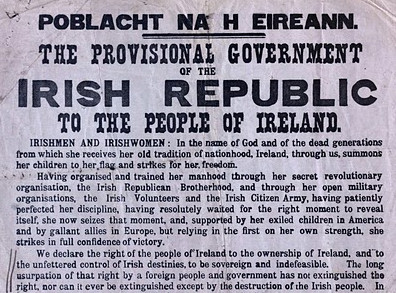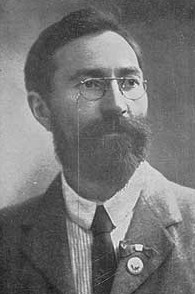| Irish Forums Message Discussion :: Reabhlóid new rte series revolution 1916 reabhloid |
   | Irish Forums :: The Irish Message
Forums About Ireland and the Irish Community, For the Irish home and Abroad. Forums include- Irish Music, Irish History, The Irish Diaspora, Irish Culture, Irish Sports, Astrology, Mystic, Irish Ancestry, Genealogy, Irish Travel, Irish Reunited and Craic
|  
|
Reabhlóid new rte series revolution 1916 reabhloid


|
|
|
| Irish
Author |
Reabhlóid new rte series revolution 1916 reabhloid Sceala Irish Craic Forum Irish Message |
Sean

Sceala Clann Counsellor
Location: KERRY
|
| Sceala Irish Craic Forum Discussion:
Reabhlóid new rte series revolution 1916 reabhloid
|
|
|
New tv series from rte called reabhlóid, which is irish for revolution.

Reabhlóid
100 years on from the revolutionary decade that was the foundation to the modern Irish State - RTÉ Cláracha Gaeilge in a new 4 part historical documentary series looks back on some of the lesser known stories that give us some fresh insights into this turbulent period of our history. Stories of passion and patriotism, tempered with the foibles of real people. The four programmes take the viewer through Easter Week 1916 and paint a picture of the rising from very different standpoints:
Episode 3 - Margaret Skinnider - A Woman of Calibre
RTÉ One, Monday 26th September at 7.30pm
The Easter Rising was a seminal event in modern Irish History. The rebel leaders were hailed as heroes and martyrs, after their execution. However, one of the lesser known names of the rebellion was that of Scottish woman, Margaret Skinnider, an unassuming maths teacher and the only woman shot in combat.
Margaret travelled from her native Glasgow smuggling guns and bombs. An able markswoman, she was a sniper in College of Surgeons. In a rare audio recording she speaks softly on the courage of Na Fianna, the kindness of "Madame" Countess Markievicz and her own relentless fight for freedom.
Bláthnaid Ní Chofaigh speaks to author Dr. Ann Mathews who compares Margaret's relationship with Countess Marievicz to that of Don Quixote and Sancho Panza and Rocinante being the bicycle. Dr. Seán Máirtín Ó Catháin of Lancashire Central University Lecturer describes the 'little Ireland' of Coatbridge, Glasgow where Irish emigrants were greener than green.
" she was at Liberty Hall ...she was there like a free-lance. ...she was not a member of Citizen Army but she alligned herself to Countess Markievicz .... she took up the role as gunrunner and courier" Ann Mathews
Episode 2 - The Man in the Locket
RTÉ One, Monday 19th September at 7.30pm
A rare memento of the 1916 Rising aroused intense public interest last February when an Edwardian gold locket was sold in Sworder's Auctioneers in Stansted. Described as "incredibly poignant", the locket contained the picture of Guy Vickery Pinfield, the first British officer to be killed in the Easter Rising.
Guy Pinfield was shot and killed outside Dublin Castle but little else was known of the exact circumstances of his death until now. Indeed, the appearance of the locket highlighted several unsolved mysteries surrounding the death of the twenty one year old Second Lieutenant of the Irish Hussars.
When he was killed, Guy Pinfield was hastily buried in a temporary grave in the grounds of Dublin castle with dozens of other soldiers who died during the Rising. Most of these bodies were exhumed and reinterred once the hostilities were over, but not Guy Pinfield. His body lay in the temporary grave, unclaimed and apparently forgotten for the next forty six years. The mystery is compounded by the fact that Pinfield came from a wealthy background and his family were all still alive. So why did they leave him there?
Some efforts were made to ensure that he wouldn't be forgotten. A plaque in his memory was erected in St Patrick's cathedral, the only plaque to any combatant in the Rising, yet no one can tell when it was put there.
There is also a mysterious reference to a "Mr P-" in an anonymous diary written by one of the nurses in the British Military Hospital in Dublin Castle. This famous diary gives a detailed account of the events unfolding in Dublin during Easter week. The nurse tells of her shock upon learning of the death of "Mr P-" of the Irish Hussars. Could this be Guy Pinfield? And who was the nurse who wrote the account?
RÉABHLÓID travelled to England in an effort to shed some light upon these mysteries. We visit his home town of Bishop's Stortford where Pinfield's name appears on a number of memorials, and we go to Marlborough College and Cambridge University where he was educated. And deep in the Cotswolds, we trace the grandniece of Guy Pinfield who shows us a treasure trove of correspondence and memorabilia lovingly maintained since 1916.
The vast array of correspondence from colleagues and friends of Guy Pinfield finally answers many of the outstanding questions surrounding his death and shed a new light on one of the most famous actions of the Easter Rising, the attack on Dublin Castle. The surviving objects taken from Guy Pinfields body, including his wallet with one remaining unsmoked cigarette, serve as a powerful reminder of the common humanity of man.
- A high-minded pacifist intellectual - summarily executed.
- The first British Officer killed in the rebellion - who remained buried in Dublin Castle until the 1960s
- A young expert markswoman who travelled from Glasgow to take part in the fighting - the only woman shot in the fighting
- The forgotten nurse who was instrumental in the final surrender.
The small stories fill out some of the nuances that are sometimes lost in the telling and retelling of history through the headlines of the main players.
Episode 1
British army torture and war crimes are nothing new

Reabhlóid Looks at one of Ireland's most intriguing revolutionaries - FRANCIS SHEEHY SKEFFINGTON - an intellectual, vegetarian, feminist, journalist - a founder of the citizen army who sympathised with the Volunteers goals but as a pacifist, not their methods.. he was arrested on Easter Tuesday at Portobello Bridge on his way home from a day of trying to discourage Dublin looters who were making the most of the rebellion.
On his arrest he was used as a "Human Shield" and the next morning summarily executed together with two other journalists, on the orders of Capt. Bowen-Colthurst. Another senior British Army officer (Major Sir Francis Fletcher Vane), at considerable personal cost blew the whistle on these extra judicial killings and Bowen-Colthurst was within 6 weeks courtmartialed and found guilty (but insane) of the murders.
Reabhlóid new rte series revolution 1916
Reabhloid means revolution.
First episode of Reabhlóid goes out on
Monday, September 19th, 2011 on RTÉ One from 7:30pm to 8:00pm
|
|
|
|
|
|
|
|
|
|










